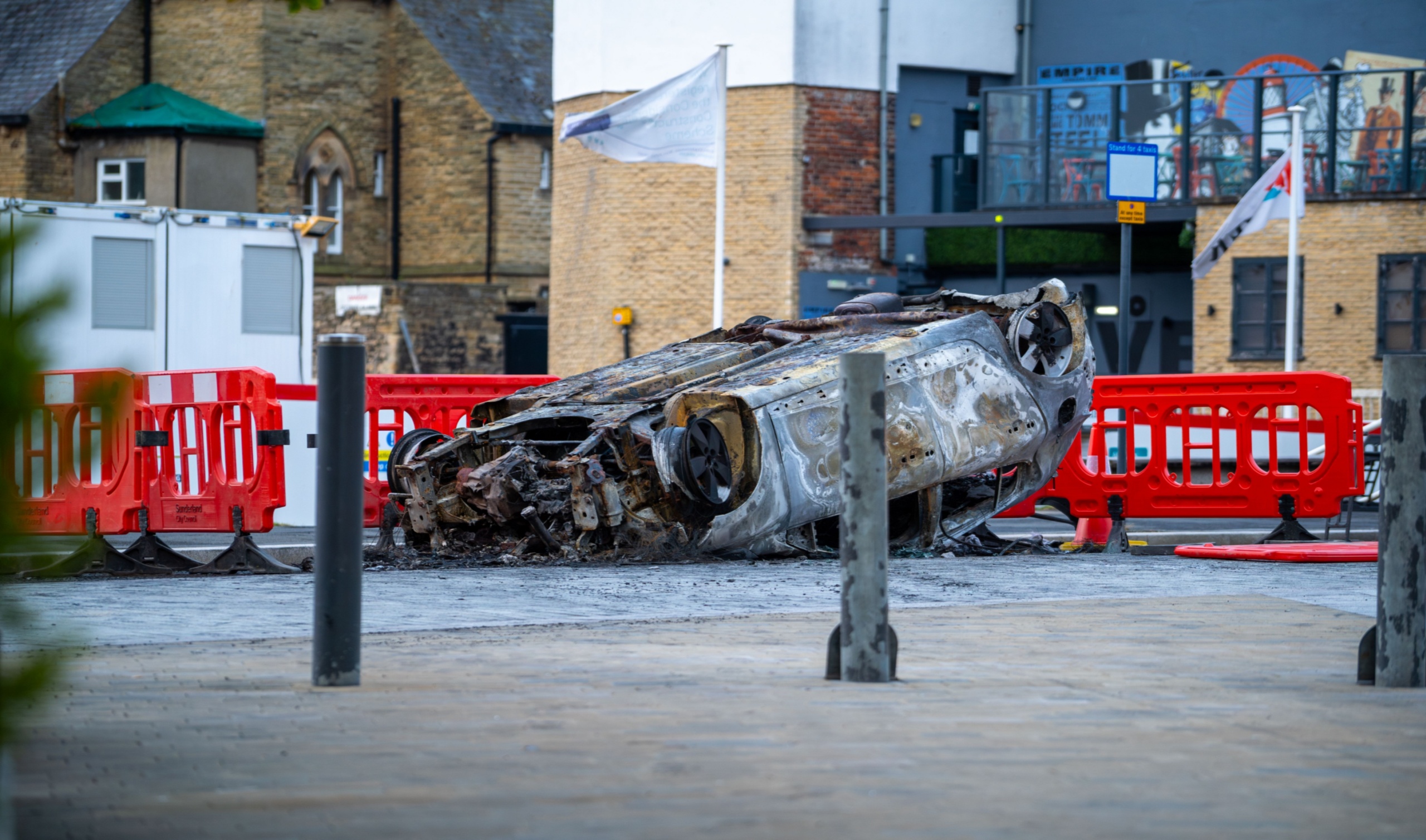This week has seen racist riots and violence break out across several major cities in the UK, impacting many universities. University buildings and students’ union buildings have been attacked by rioters.
The University of Sunderland, Kent, Durham, and Salford – to name a few – have all had to close operations early to keep staff and students safe.
Institutions now must face several brutal truths when it comes to EDI: the work they must do stretches beyond their own communities; that work is complex and painful; and the issues stem from their their learning communities and narratives as well.
Bubbles and bursting….
Universities have never existed in a bubble, and students will always be impacted by the wider environment within which their physical campus exists.
Way back when I was still a chipper students’ union president — way before lockdowns and all the government leadership changes and elections – we had to deal with some racism issues Asian students were facing in the city centres.
Global news sites reported that a virus that started in Wuhan, China, had spread to Italy, and there were fears it would reach the UK.
As a result, Asian students reported to us that they were experiencing racist taunts to do with the virus and that the alleged perpetrators were locals, not students.
It was the first time I had come into contact with students facing harm off campus from perpetrators who were not members of the university community.
It is all very well and good promising students that campus is inclusive. But what happens when the extreme racism students face is occurring in the city that envelopes that campus? The city they must travel through and live in every day?
It is all very well and good to run an inclusivity campaign. But there is little point in running a campus campaign on something perpetrated by people in the wider community, which students are a part of. There is no Office for Students requirement that all members of a community in which a university exists should take lessons on consent or bystander intervention training alongside students.
Cut from the same cloth…
The thing is, the town/gown divide doesn’t really matter. The discourse that has caused this outpouring of violence and rage comes from the same rhetoric levelled at international students. When these riots first began in Southport a week ago, the discussion around was immediately about “the disenfranchised working class”.
The analysis that the attitudes towards migrants and people of colour are on display are borne from the “uneducated” working classes is lazy and incorrect.
“They are taking our jobs” sings from the same hymn sheet as “They are taking our children’s university places” – a claim we saw again and again, sometimes subtle and covert, and sometimes blatant, from middle-class columnists read and absorbed by middle-class parents.
Class is not the issue here. The far-right anti-immigration stance has always included international students – ratified further with the latter’s inclusion in net migration figures. It is all replacement theory. The theory claims (falsely) that white people are being stripped of their power through the demographic rise of communities of colour, driven by immigration. And if you have been watching the news this week, you would have seen countless vox-pop interviews where “protestors” argue “that white people are becoming a minority” and that white, British people’s needs are not being met as resources are directed to people or other races and nationalities.
This is where universities have to be careful in how they respond. It makes sense that a kneejerk reaction to intolerance is to celebrate the cultural diversity in higher education (and you see this somewhat in posts on X where the author points out that their doctor, lawyer, dentist, surgeon, etc., was a migrant). But ringfencing the “good migrant” (problematic in itself) with the educational elite does nothing to counter the bitter perception of an establishment that favours “the other.”
Particularly because this messaging sits alongside the swathes of posts saying a variation of something like, “No, John the tradesman with no GCSEs, Ahemd the surgeon is not taking your job,” which is an unhelpful and sneering intellectualism that goes against everything widening participation work attempts to do. It also forgets that tradespeople build the classrooms medical students learn in and that some tradespeople are migrants.
Targets
On the other hand, perhaps an idea would be to embrace the WP part of EDI and roll out infographics pinpointing all the countries which an institution’s staff — from cleaners to vice chancellors — and students come from a celebratory swing so the wider public could understand the value migration brings. It’s a nice and well-meaning idea – as so many are in EDI.
But it’s a bad call. The last thing to do right now would be to draw attention to universities as huge hubs of racial and cultural diversity comprised of hundreds of different nationalities. This would actually be reckless. Universities would become the targets.
This is where we, as a sector, realise that EDI is not always “happy and fun” or a “celebration of difference.” Where we accept that some people hold horrific, vile views, and no amount of positive campaigning, awareness raising, diversity profiling, or cultural weeks will change them.
Racism is often referred to in HE as a wicked problem that manifests itself in leaky pipelines and attainment data. Now, it is critical. EDI, at this very moment, is about ensuring staff and students are free from the very real threat of far-right, racist violence.
But we do need to say something…
And it should be named for what it is. The University of Warwick has released a statement, and the vice-chancellors of the University of Liverpool, Liverpool John Moores University, and Liverpool Hope University condemned the riots as racist in a joint statement condeming the violence as racist. That’s good. There have also been several internal messages sent around different institutions’ departments.
I wonder if university leaders and membership bodies should have been more heavy-handed in condemning the xenophobic rhetoric surrounding international students that came out of the last government (which will undoubtedly have contributed to this) rather than responding with how wonderful our diverse communities are and how welcoming the country is for international students.
Because the marketing/reality contrast is not a good look, not least because Nigeria, Malaysia, Australia, Indonesia, the UAE, and India have all sent out alerts advising their nationals living in or visiting the UK to stay away from demonstrations. I can’t help but notice that some of these countries are where universities recruit huge swathes of students.
I fear such alerts, combined with the anecdotal posts going semi-viral on X (formerly Twitter) about international students needing to stay home due to potential racist violence, will have any level-headed prospective student questioning the sincerity of promises of safety.
It comes back to the conundrum some universities struggle with: to admit there is a problem admits institutional fault. But – as with sexual violence – it exists. And to acknowledge it signals to students it is being taken seriously.
Dealing with it…
Universities will need to work with third parties in dealing with harassment and violence against their students in the coming days and weeks – particularly marginalised students, international students, and students of colour.
The problem is working with the police is going to be very tricky given that the police were so recently utilised against – often brown students – protesting pro-Gaza demonstrations earlier this year. The trust is not there. Apparatus of state violence being levelled against some members of learning communities more often than others is another complex “not fun” EDI issue.
Students’ unions and chaplaincies have already offered support. If I were in senior management, I would invest resources in safeguarding and intel to heighten security. I would also improve communication around reporting incidents of violence and harassment and signpost every verified support system available to staff and students. And I would certainly not ask staff and students most impacted—or even targeted—by the riots to do any of this work. This is all miles away from the wishy-washy “nice” work EDI is sometimes seen as, but it is what hard work on EDI is.
I am in no way saying that cultural appreciation or diversity celebration days do not have their place, but that forceful commitment to EDI is needed now. The shards of glass scattered across the paving on a university campus is not an image any of us will forget anytime soon.
Universities are bound up in nations currently dealing with a rise in brazen outright racism, which is impacting staff and students both on and off campus. The violence needs addressing, but the tone in which providers do so must be appropriate to match the severity of the scenes we have seen unfold and in a way that will not endanger staff and students. EDI is dirty work.




